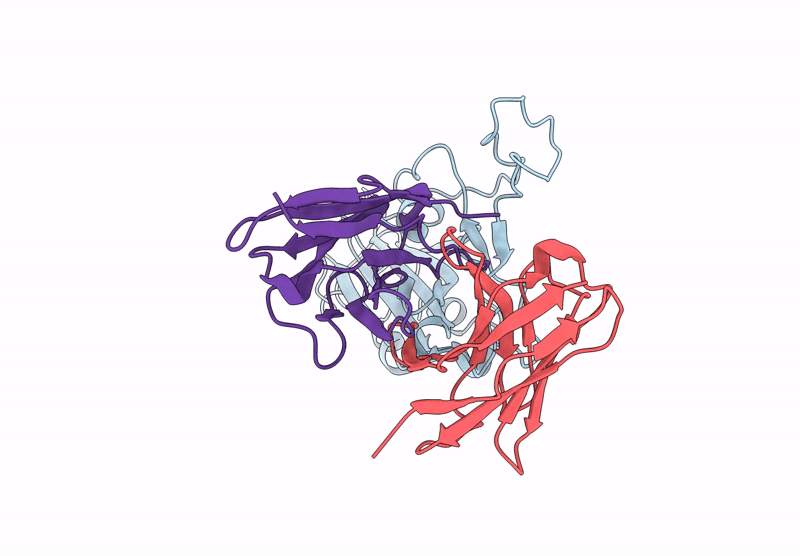
Deposition Date
2024-05-30
Release Date
2024-12-25
Last Version Date
2025-07-16
Entry Detail
PDB ID:
8ZPP
Keywords:
Title:
Local CryoEM structure of the SARS-CoV-2 BA.5 in complex with ORB10 Fab
Biological Source:
Source Organism:
Severe acute respiratory syndrome coronavirus 2 (Taxon ID: 2697049)
Severe acute respiratory syndrome coronavirus 2 (Taxon ID: 10665)
Mus musculus (Taxon ID: 10090)
Severe acute respiratory syndrome coronavirus 2 (Taxon ID: 10665)
Mus musculus (Taxon ID: 10090)
Host Organism:
Method Details:
Experimental Method:
Resolution:
3.60 Å
Aggregation State:
PARTICLE
Reconstruction Method:
SINGLE PARTICLE


